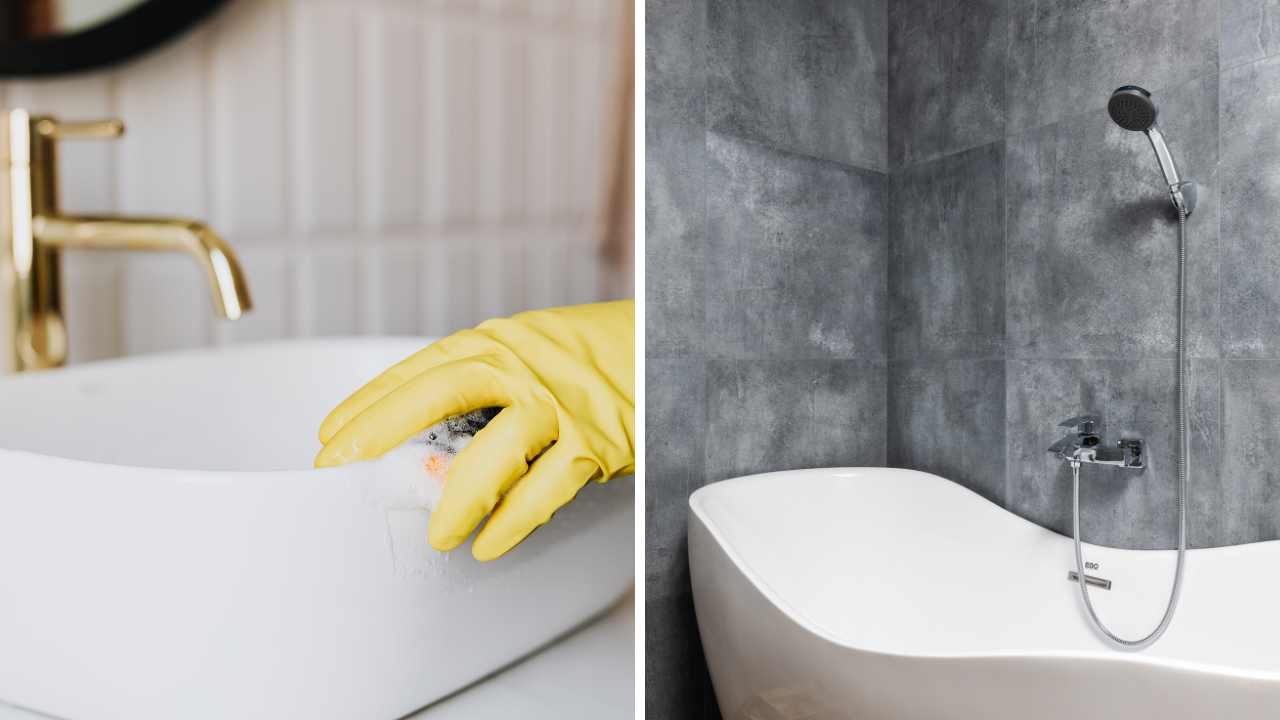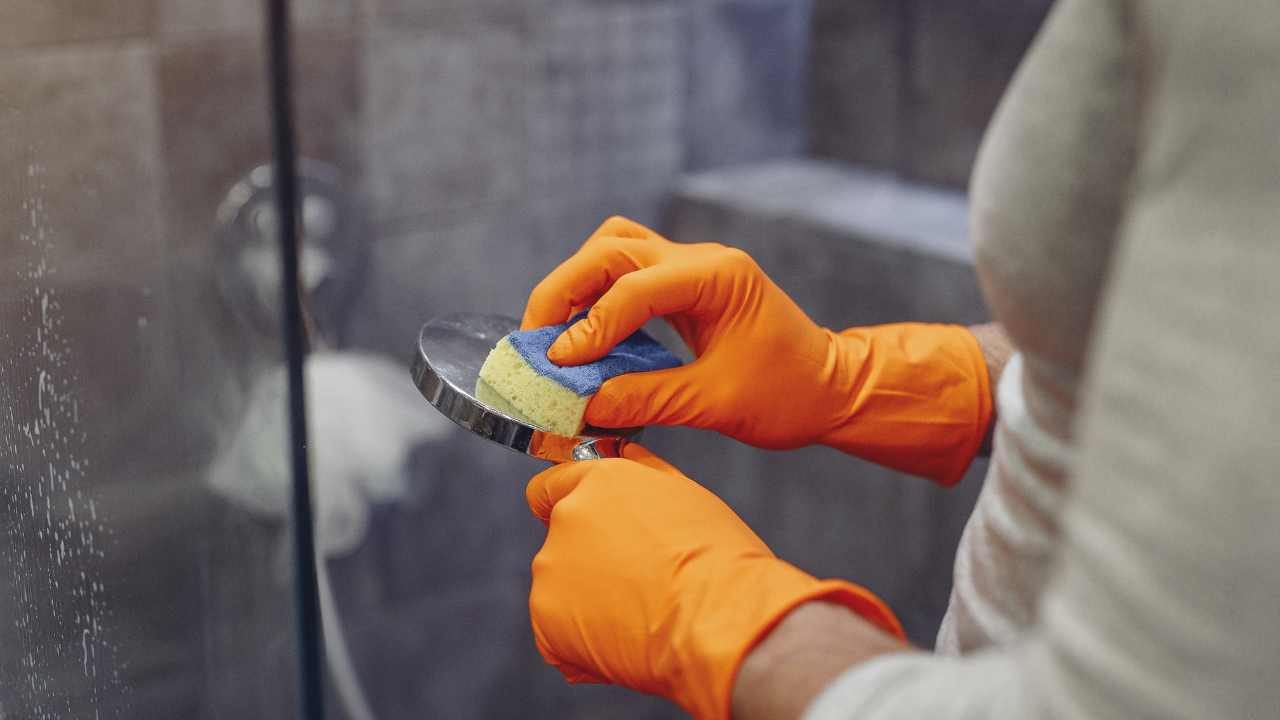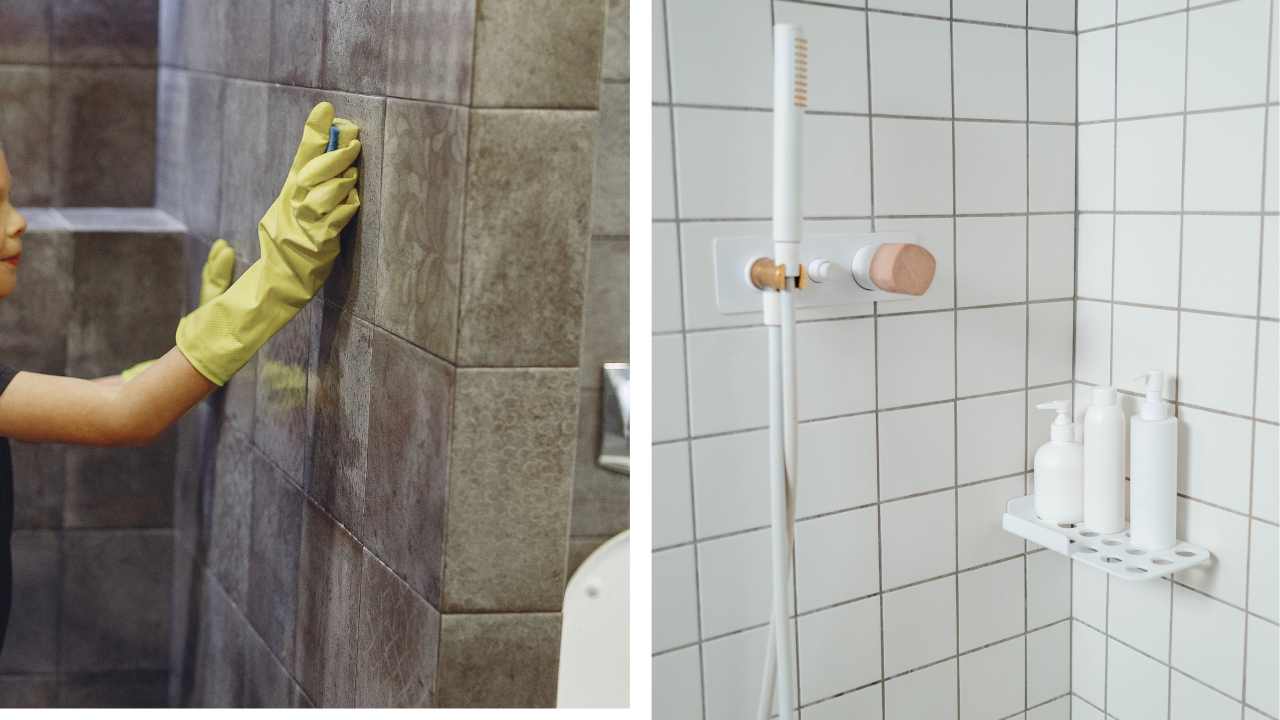A Step-by-Step Guide to Cleaning Bathroom Tiles And Grout
Learn the most efficient way to clean your bathroom tiles with this guide! From choosing the right cleaning products, to top methods to clean.

Keeping your bathroom tiles clean can be a difficult job. Especially if you have neglected cleaning them for any length of time. Grime and dirt can accumulate quickly, leaving your tiles looking dingy and unattractive.
With the right tools and techniques, cleaning bathroom tiles and grout lines can be a breeze. In this comprehensive guide, we’ll take you through the step-by-step process of cleaning tiles in the bathroom, including expert tips, tricks, and hacks to get the job done faster and with less effort.

Choosing the Right Cleaning Supplies for Your Bathroom Tiles
Before you begin cleaning your bathroom tiles, it’s important to choose the right cleaning supplies that will get the job done effectively. Start by selecting a good quality cleaner that’s specifically designed for bathroom tiles.
Avoid harsh chemicals that can damage your tiles or harm your skin. Opt for a multi-surface cleaner that works well on both tiles and grout lines.
You can also try homemade tile and grout cleaners such as a peroxide and baking soda mix. This will be more environmentally friendly and can save you some money.
For an all-purpose cleaner baking soda and vinegar work pretty well together and do a good job of cleaning those difficult messes.
Preparing Your Bathroom for a Thorough Tile Cleaning
Before you begin cleaning, remove all items from your bathroom and sweep or vacuum the floor to remove any loose debris.
Next, wet the tiles with warm water to loosen dirt and grime. For stubborn stains or grime, try using a soap-based cleaner or vinegar and water solution. Dip a scrub brush into the mixture and scrub the tiles in circular motions. Rinse with clean water and dry with a clean microfiber cloth.
Using electric bathtub and shower scrubbers can significantly speed up the process if the grout and tiles are particularly bad. If you can use mechanics to do most of the work for you that's an added benefit. They even have extenders so you don't have to bend over and strain your back while cleaning.

The Gentle Approach: Daily and Weekly Maintenance Tips
One of the best ways to keep your bathroom tiles looking clean and fresh is by implementing a daily or weekly maintenance routine.
This can include wiping down your tiles with a soft cloth after each use, using a squeegee to remove excess water, and using a daily shower cleaner (like Rain-X Shower door cleaner) to prevent soap scum buildup.
Having a cleaning calendar is going to make your job much easier. Being disciplined to a schedule will ensure that no job builds up to the point it feels unmanageable.
By staying on top of your bathroom tile cleaning, you’ll be able to avoid those deep, difficult cleans and maintain a spotless bathroom.
Tackling Stubborn Stains and Grime on Bathroom Tiles
If you’re dealing with stubborn stains or hard-to-remove grime, there are several techniques you can try.
For tougher stains, create a paste of baking soda and water and apply it to the affected area. Allow it to sit for a few minutes before scrubbing it with a soft-bristled brush. Alternatively, try using a steam cleaner to loosen and remove tough dirt without any harsh chemicals.
Pro tip: For tough stains, try mixing white vinegar and hydrogen peroxide. This combination can be very effective on stubborn grime and dirt.
Deep Cleaning Grout Lines for a Sparkling Finish
Grout lines can often be the trickiest part of cleaning bathroom tiles, but they’re just as important as the tiles themselves. To clean grout lines thoroughly, you can use a grout cleaner or make your own mixture of baking soda and hydrogen peroxide. Use a small brush to scrub the grout lines and rinse with warm water.
It may take some scrubbing to clean the grout thoroughly, but it’s worth the effort for a sparkling finish. Be sure to use a brush that is firm enough to break up any gunk but not so firm that the bristles start eroding the grout.
Natural Cleaning Solutions for Eco-Friendly Tile Care
If you’re looking for a more eco-friendly approach to cleaning your bathroom, there are many natural solutions you can use. Vinegar and water solutions are great for removing dirt and grime, while lemon juice and baking soda can be used for tougher stains. Be sure to test any natural solutions on a small, inconspicuous area before using them on your entire bathroom.
Using strong chemicals in an enclosed space such as a bathroom may not be ideal. Even though it is the most effective way of cleaning the tiles it's not the safest or most environmentally friendly.
Our favorite tile-cleaning recipe is baking soda, hydrogen peroxide, and dish soap. You can through some lemon juice in there if you like as well.
- Mix baking soda into the peroxide until it has a paste-like texture.
- Add a small amount of soap to the paste, based on your preference.
- Add a squirt of lemon juice if you would like. (optional)
- Apply the paste to the tiles and grout and scrub it in with circular motions. You can even use an old toothbrush for this.
- Let it sit for a few minutes and then wipe it off with a damp cloth and rinse with warm water.
- If there is still grime on the floor tiles repeat the process, it may take a couple of times for really dirty tile and bathroom grout.
Another recipe to try is adding peroxide, water, and lemon juice into a spray bottle. Mix it up thoroughly and spray the vinegar solution onto your ceramic tiles. Never use acidic cleaners on your natural stone tiles. Acetic acid can be harmful and cause discoloration on natural stone flooring. You can add a few drops of soap to the mix as well.
Cleaning bathroom tiles with vinegar is a good way to clean that stubborn tile grout. Distilled white vinegar is our go-to for shower tiles and to clean shower glass without leaving streaks.

Preventing Mold and Mildew Growth on Bathroom Tiles
Mold and mildew can quickly take over your bathroom tiles if not properly cleaned and maintained. To prevent mold and mildew growth, make sure your bathroom is well-ventilated and dry, especially after showering. Use a mold and mildew-resistant shower curtain and regularly clean your showerhead to prevent buildup.
You can clean your shower head by putting distilled vinegar in a container and lifting it to the shower head so it is fully submerged. This will help clean out any hard water buildup and keep the shower head sanitized as well.
If you have a big mold problem you may want to consider different bathroom flooring options that can help prevent problems from occurring.
Restoring Shine and Luster to Dull or Faded Tiles
If your bathroom tiles have lost their shine or luster over time, there are several ways to restore them. Try using a tile sealer or finish to protect and shine your tiles or use a wax-based cleaner to bring out their natural luster. Be sure to follow the manufacturer’s instructions carefully and test any products on a small area first.
Porcelain tiles are the easiest to clean and restore. For a shiny finish, use a paste wax cleaner with a soft cloth. Start by spreading the paste onto the tiles and then buff it in small circles until you have achieved the desired shine.
For ceramic tiles, try using an all-purpose cleaner or vinegar solution to bring back their color and luster. Use a soft sponge or cloth to apply the cleaner, then rinse off with clean water.
Essential Dos and Don'ts for Bathroom Tile Cleaning
To ensure you’re cleaning your bathroom tiles effectively and safely, it’s important to follow some essential dos and don'ts. Do use a soft-bristled brush and multi-surface cleaner, wipe down your tiles regularly, and wear protective gloves and eyewear. Don't use harsh chemicals, steel wool, or abrasive tools that can damage your tiles.
To remove tough stains and clean tiles you will be tempted to bring out the scouring pads but that will cause more harm than good. Instead, opt for products that are specifically designed for bathroom tiles and use natural ingredients such as baking soda, vinegar, or lemon juice to bring out a sparkling shine. This is also an environmentally friendly way of cleaning your tiles.
Conclusion:
Cleaning bathroom tiles can be a challenging task, but with the right tools and techniques, it doesn’t have to be. By following this comprehensive step-by-step guide, you’ll be well-equipped to tackle any grime or dirt on your bathroom tiles. Remember to choose the right cleaning supplies, take a gentle approach with daily and weekly maintenance, and tackle stubborn stains and grime with the appropriate techniques. And most importantly, don’t forget to enjoy the sparkling, fresh feel of your clean bathroom tiles!

